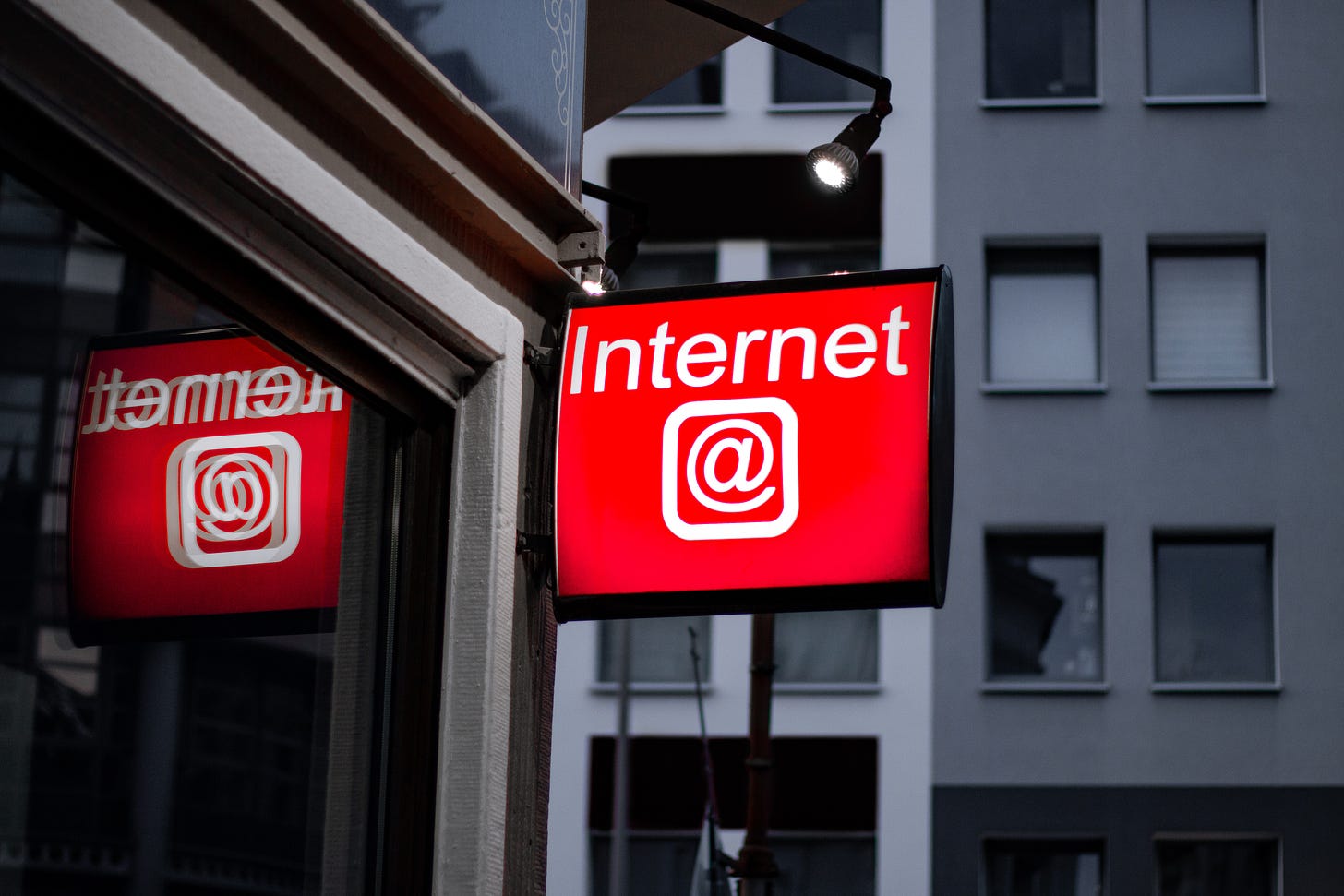Collective effervescence, remote culture, and liveness
Thinking about how digital can help people gather in new ways
This week I read an excellent article about the world’s last remaining internet cafes.
Internet cafes are something I’m very fond of and have made use of everywhere from Leeds in Yorkshire to McLeodganj in the Himalayas.
It was interesting to read about how many internet cafes (particularly in Asia) responded to the increasingly widespread availability of…the internet by pivoting to becoming places where people could meet to play games online.
However even this pivot couldn’t protect them from the pandemic and many are now closed for good.
“What was lost is the gathering space for in-person gathering and hanging out — the communal sharing of food, sharing a dream, being together in the same space”
Reading this quote reminded me of a conversation I had with one of the Artistic Directors of MCC Theater in New York, Will Cantler.
I spoke to Will during the first lockdown, when almost every cultural organisation was trying to work out how they could use digital tools to continue to make and share work with audiences.
Mostly this ended up with lots and lots of archive film being put onto YouTube, which wasn’t especially effective.
In our conversation, Will said something which still feels very relevant today.
“Telling stories, bringing an audience together, creating some sort of campfire where we can all listen, is fundamental to our DNA.
And how do we do that when, for the foreseeable future, we're not going to be able to physically gather around the campfire?
That's when we started thinking about what kind of programming can we do that isn't trying to make a little movie. I mean, we're not gonna be Netflix, that's not us.”
Understanding how digital could support, or enhance this gathering, this communality could be the key that unlocks what digital could be for the cultural sector.
Alongside this there needs to be a frank conversation about what digital can and cannot be. Because there is nothing worse than a pale facsimile of an experience.
But I really do think that with the right approaches digital experiences can be communal, emotional, and meaningful.
This New York Times article on ‘collective effervescence’ (the sense of energy and harmony people feel when they come together in a group around a shared purpose) mostly eulogises the return to in-person gathering, but I think many of these lessons are applicable, or at least worth meaningfully exploring, in a digital context.
“…emotions are inherently social: They’re woven through our interactions.
Research has found that people laugh five times as often when they’re with others as when they’re alone. Even exchanging pleasantries with a stranger on a train is enough to spark joy. That’s not to say you can’t find delight in watching a show on Netflix. The problem is that bingeing is an individual pastime. Peak happiness lies mostly in collective activity.”
But digital experiences do not need to be individualistic.
As Bristol University’s Doctor of Audiences, Dr Kirsty Sedgman said when I spoke with her for the Digital Works podcast in late 2020:
“social media and the internet has given us other opportunities and perhaps other kinds of liveliness and ways to be socially present whilst we're physically distant”
But if the cultural sector is to start to develop uniquely appropriate and valuable digital experiences these cannot just be an attempt to take what is on our stages and exhibition spaces and plonk it online.
This shift in thinking is something that Storythings Director, Matt Locke explored in his article on, as he calls it, ‘remote culture’.
“that made we think there might be more parallels between the rise of radio in the 1920/30s and how COVID will affect culture in the next few decades. Both these moments posed new challenges to cultural providers - how do you deliver your stories into people’s living rooms? - as big a challenge for theatres and operas in the 1920s as it has been for COVID-hit venues in 2020”
Since that period at the start of 2020 we saw a spike in digital activity and then a sudden retrenchment as 2022 arrived and venues could welcome back in-person audiences.
It has been fascinating to observe how the sector has tentatively explored what might be possible by harnessing a digital approach.
How, to use Will’s words, some sense of “gathering around the campfire” can happen without people needing to be physically together. And how, in this context, cultural organisations can shift their thinking and realise, as Matt’s article points out, that they cannot exercise the same level of control over the experience as they do when an audience enters their building.
I genuinely believe that exploring this question will unlock significant and exciting opportunities for cultural organisations of all types.
And this is an urgent question.
As my colleague, Katie Moffat, highlighted in her most recent Digital Works newsletter, research is increasingly showing that younger audiences do not differentiate as clearly between on- and off-line experiences in terms of ‘value’ or ‘meaning’.
“For more people, the digital and physical are likely becoming equally real and meaningful. More of their emotional, social, and informational needs are being served by the digital milieu”
How can we as a sector meaningfully engage with this shift?
It is not just about what we deliver in digital spaces but how we curate and co-create that whole experience with our audiences.
This is something that we are exploring at Substrakt through our creative R&D project, Venues of the Future, but I’m intrigued to see and hear about who else is asking (and answering) these types of questions.




